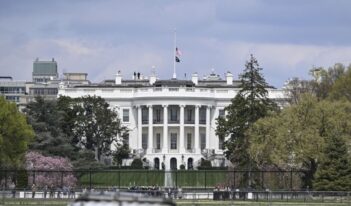
It is time to reconsider the value of the VSL in policy analysis.
The value of a statistical life (VSL) is a popular way to quantify the benefits of mortality risk reduction in cost-benefit analysis of public policies. The VSL enjoys widespread support across the government and in parts of academia, and it is one of the most common ways that analysts assess the benefits of regulations that aim to reduce life-threatening risks. Despite fairly widespread acceptance, however, the VSL has fundamental, often overlooked flaws that make many of its uses questionable. Regulators should reconsider the VSL’s role in policy analysis.
The VSL is a measure of the value of changes in mortality risk, usually to workers. It is typically estimated by looking at the increased wages individuals in the workplace are willing to accept in return for taking on some incremental risk on the job. Armed with this information, an analyst can infer a dollar amount at which workers value their own lives. This number can then be used in cost-benefit analysis when regulatory interventions are expected to prevent fatalities.
At first glance, this methodology seems consistent with the fundamentals of cost-benefit analysis, which evaluates policies by examining how much people are willing to pay for policy benefits and accept for bearing their costs. Once one prods this theory a little deeper, however, it becomes clear that the VSL is not as consistent with the cost-benefit framework as it at first appears.
The inconsistency is most obvious when looking at the end of life. Consider, for example, the extreme case of terminally ill people who have only weeks left to live. They might be willing to pay considerable sums—perhaps even everything they have—on even the riskiest of treatments, just on the off chance it might be lifesaving. After all, what do they have to lose?
It is easy to imagine a person wishing to spend tens or even hundreds of thousands of dollars in this way, and, importantly, patients who choose to do so would be acting in complete accordance with their own interests. It should be clear, though, that in this example there is a discrepancy between the interests of individuals whose lives are on the line and the broader interests of society. From a cost-benefit standpoint, resources gambled away on Hail Mary treatments might have instead been used to help more individuals who have a much higher survival probability.
In other words, taking certain individual preferences as a guide for society-wide policy action is misleading, as the opportunity cost of resources to specific individuals and their loved ones can be very different to society more generally. This lesson has relevance to real-world policy, as the U.S. Environmental Protection Agency routinely values short life extensions to the elderly by as much as $10 million, even when just a few months or a year are attached to the end of lives.
Is this issue limited to extreme end-of-life cases? The problem—that individuals’ preferences often diverge from the more general interest of all individuals—is a general one. The simplest reason is that an individual has a limited time horizon, whereas society does not. This divergence in interests simply becomes more apparent as life nears its end.
The key problem with the VSL, in a nutshell, is that it narrowly focuses on a regulatory benefit that we can immediately see—reduced mortality risk for some specific group right now. But the VSL ignores how consequences of individuals’ choices align with society’s best interests, especially concerning outcomes far in the future.
Consider those workers who built the Brooklyn Bridge, a physical structure that generates economic activity to this very day. It is unlikely those workers who built the bridge paid much thought to modern-day society’s well-being when deciding to take the job. To them, we are remote strangers. Their contributions to the productive parts of the economy, however, endured long after they were gone.
It is easy to see why basing policy on the VSL might encourage short-term risk reduction: “Give them what they want now!” is basically what the VSL directs policymakers to do. But what people want now is often more consumption, and by directing resources toward consumption that would otherwise be invested, productive capital is destroyed. Those who lose out are people in the future who would otherwise benefit from a wealthier world.
Where did economists go wrong? The empirical cart seems to have gotten ahead of the theoretical horse. Early debates about the value of life tended to be philosophical, but out of those discussions no real consensus emerged. The VSL’s use spread widely once the data became more accessible for estimating it, but the underlying theory to justify its use remains seriously underdeveloped.
The VSL is a poor gauge for assessing the efficiency of life-saving policies, and it conceals fundamental tradeoffs between the short-term interests of the individual and the long-run well-being of society. It is time to reconsider the value of the VSL, starting with its role in cost-benefit analysis.
This essay addresses issues explored in greater detail in the author’s report, “Rethinking the Value of Life: A Critical Appraisal of the Value of a Statistical Life,” issued by the Center for Growth and Opportunity at Utah State University.
This essay is part of a seven-part series, entitled The Value of the Value of a Statistical Life.




